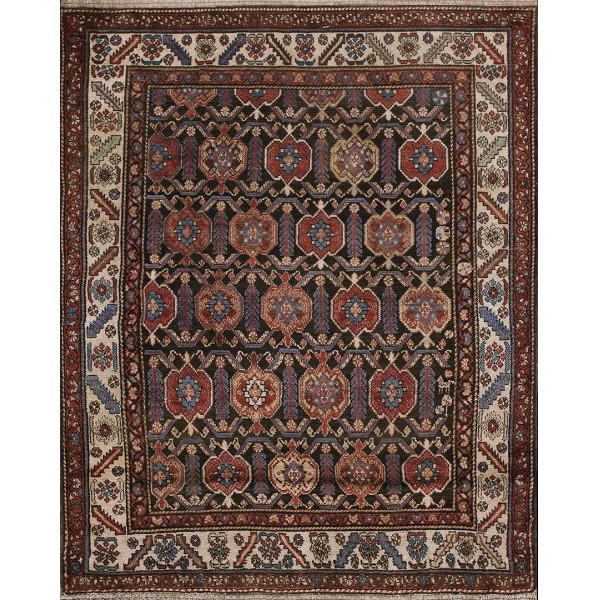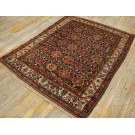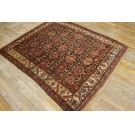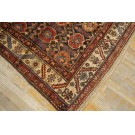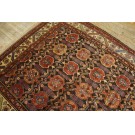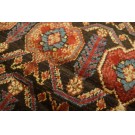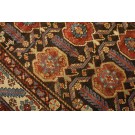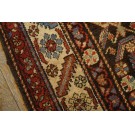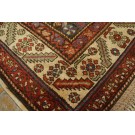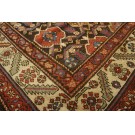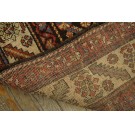Early 20th Century Persian Malayer Carpet
Another clever interpretation, this time of the Afshar palmette pattern in half-drop rows. The brown field sets off the red and gold elements well. Tiny botehs and an animal (dog?) add rustic charm. The ivory border has a version of the rosette and diagonal leaf pattern. This c. 1920 west Persian Malayer rug is in excellent condition and would pair well with an Afshar in the same design.
| Stock ID: | #21110 |
| General Rug Type: | Persian Informal |
| Specific Rug Type: | Mashad |
| Circa: | 1920 |
| Ground Color: | Brown |
| Border Color: | Ivory |
| Origin: | Persia |
| Material: | Wool |
| Weave: | Pile - Knotted |
| Shape: | Square |
| Width: | 4' 8" ( 142 cm ) |
| Length: | 5' 6" ( 168 cm ) |
DescriptionMashadThe largest city in Khorassan Province, northeast Iran. The carpet industry there is a late 19th century creation of relocated Tabriz merchants. Both Turkish (Turkhaff) and Persian-(Farsihaft) knotted rugs are produced in large sizes up to 20 x 30, in rich colors including a mulberry. Red designs are strictly curvilinear and often large animals and birds appear. Open fields with medallion and corner ornamentation are common. The texture is thick and heavy. The use of jufti knots allows rapid production. In the 20th century, several renowned workshops (Emogli, | |
| Tearsheet Download | |
